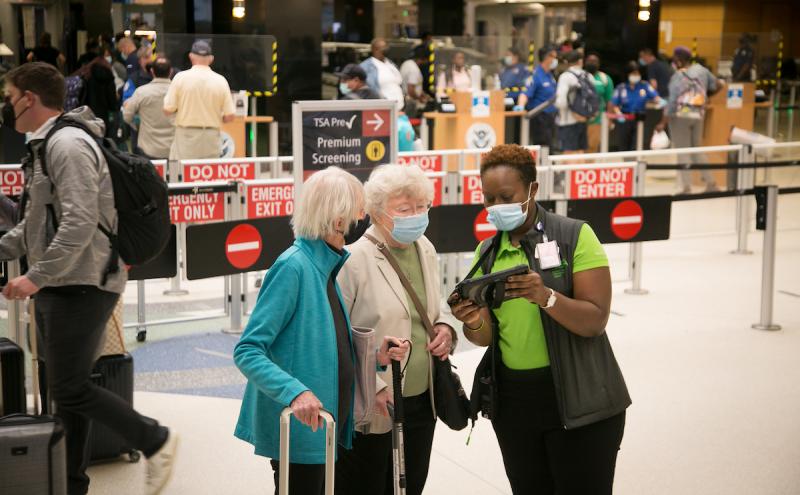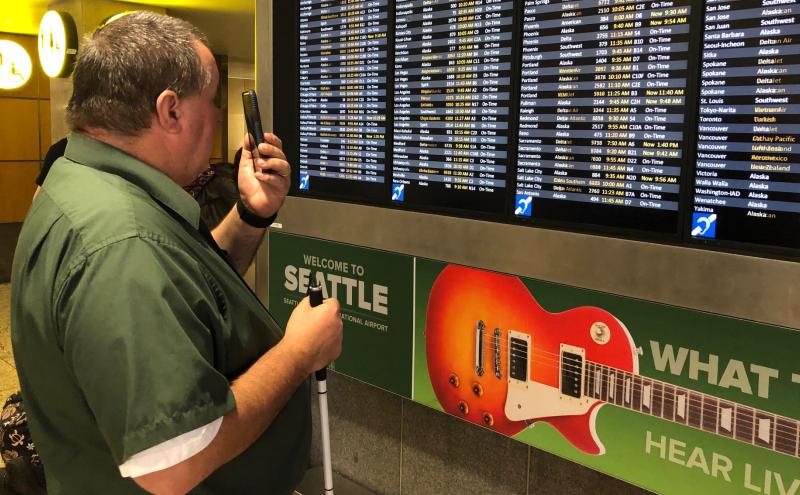
The Americans with Disabilities Act (ADA) is often associated with physical improvements that ensure every pe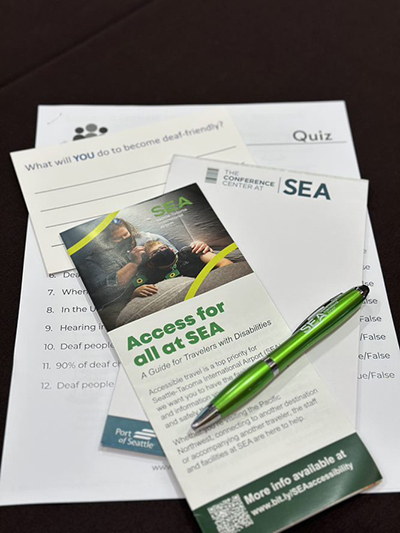 rson can access a building. But this groundbreaking legislation has had far more of an impact than changing the degree of slope on a ramp or the size of a curb on a sidewalk. The ADA helps to create a more inclusive digital and physical world that is more accessible to everyone.
rson can access a building. But this groundbreaking legislation has had far more of an impact than changing the degree of slope on a ramp or the size of a curb on a sidewalk. The ADA helps to create a more inclusive digital and physical world that is more accessible to everyone.
“The ADA is a civil rights law that prohibits discrimination against individuals with disabilities in all areas of public life, including jobs, schools, transportation, and all public and private places that are open to the general public. The purpose of the law is to make sure that people with disabilities have the same rights and opportunities as everyone else.” (Source: ADA National Network)
One community (among others) that has benefited from this impact are people who are deaf and hard of hearing.
SEA’s commitment to accessibility
Seattle-Tacoma International Airport (SEA) celebrates the ADA today and every day — and has set a goal to become the most accessible airport in the nation. And that means prioritizing investments in facilities, customer service programs, and digital resources to make the airport welcoming, safe, and comfortable for everyone.
Here’s how SEA Airport is making it easier for deaf and hard of hearing travelers, but you can find more information on accommodation for everyone on the Accessibility page.
Staff education
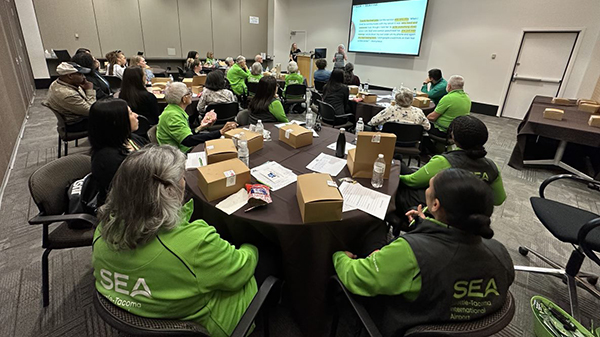
The service that travelers receive in the airport can make or break their experience. So that’s why SEA Airport employees and volunteers are being trained to best serve travelers with disabilities.
In spring 2023, airport staff attended four workshops from instructors who are deaf on how to provide excellent customer service to their community. A team from Deaf-Friendly Consulting shared first-hand airport experiences with the airport team. Attendees left with a better understanding of Deaf people and culture, and the barriers that airport travelers experience. They also participated in other exercises and American Sign Language (ASL) activities to better serve deaf and hard of hearing travelers.
Feedback from participants has been overwhelmingly positive.
“I learned that much of my understanding about communicating with the Deaf or hard of hearing was not entirely correct. I enjoyed that the class was taught by deaf instructors and that was able to give us some experience/practice communicating prior to helping deaf and hard of hearing customers."
“As someone with previous training and experience in American Sign Language, I still learned something new from this workshop! The Deaf Friendly Customer Service Workshop covered airport-specific signs for us to explain and demonstrate to us. Aviation is a very specific environment so it was helpful to know how to best communicate for deaf and hard of hearing travelers. I truly enjoyed how engaging the speakers were. It helped to capture Deaf culture and share in a supportive way how you can best communicate with deaf and hard of hearing people and make travel accessible for people with disabilities.”
Deaf and hard of hearing traveler resources
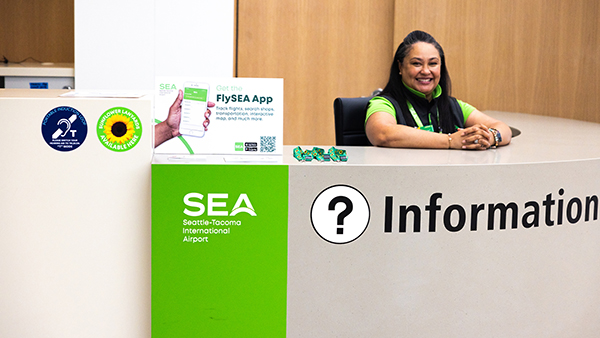
Video remote interpreting
The Pathfinder customer service team has tablets with access to live American Sign Language interpreters. You can find a Pathfinder in bright green uniforms at the following locations:
- Walking through the terminal to help travelers on the go
- Standing at the two main Information Desks between 7:00 a.m. and 9:00 p.m.
- Airport Information Desk before security (between TSA Checkpoints 3 and 4)
- Airport Information Desk after security (between Gates A5 and A6)
Auditory assistance
Visit the information desks listed above for Portable Induction Loops that amplify sound for passengers with T-coil hearing aids.
Sunflower lanyards 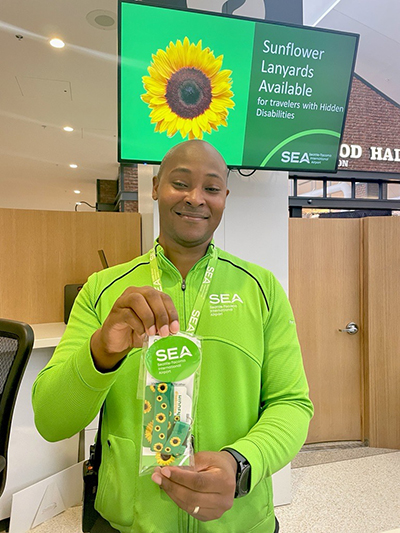
SEA Airport was the first in the U.S. to offer Sunflower Lanyards to passengers with disabilities that are not visible such as autism, PTSD, or hearing loss. First pioneered at Gatwick International Airport in London, the Sunflower Lanyard communicates that extra patience, flexibility, or assistance may be needed. The lanyards are optional and offered free of charge at the Information Desks and you can list your needs for assistance on the lanyard’s tag.
FlySEA app
Whether you’re looking for the fastest TSA security checkpoint line, accessible routes through the terminal, or searching for mobile food delivery in the terminal, the FlySEA App will make your airport visit easier.
Looking ahead
In an effort to make all facilities and digital properties more accessible, the Port Commission recently adopted a new Language Access Policy to expand career and work opportunities at the Port. The motion identifies and eliminates disparities in access to working with and for the Port of Seattle. The Language Access Policy begins the work to systematically ensure that all audiences have access to critical Port information, despite language or accessibility barriers. American Sign Language has been identified as a Language Access Policy component.


